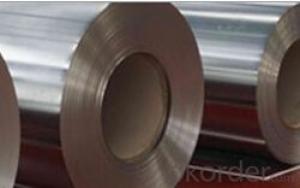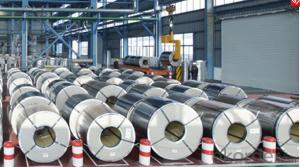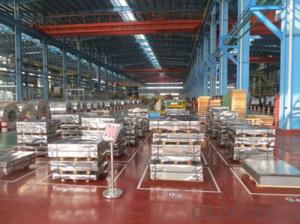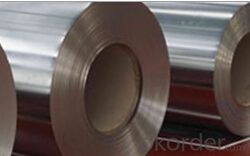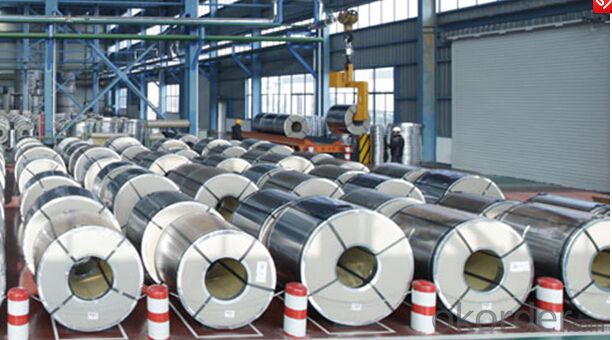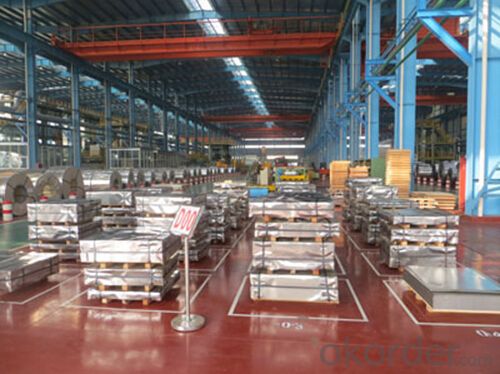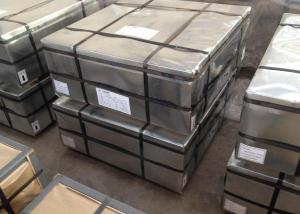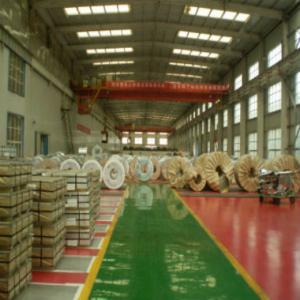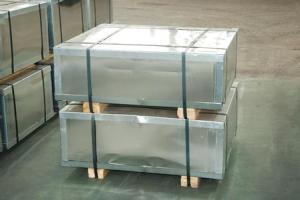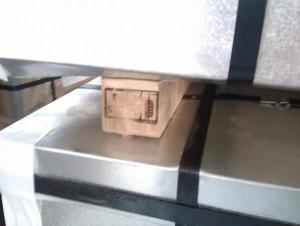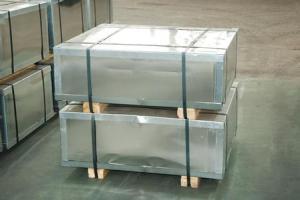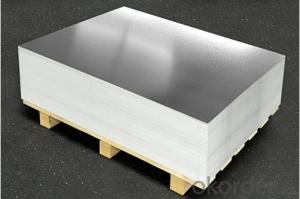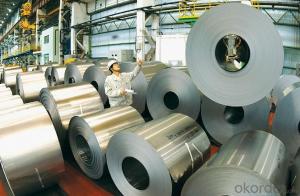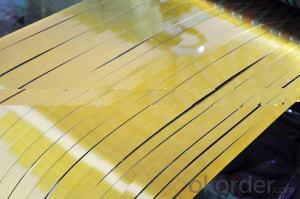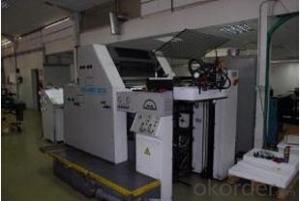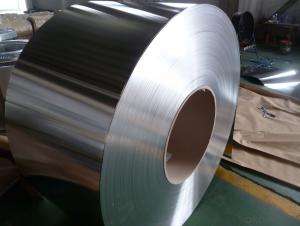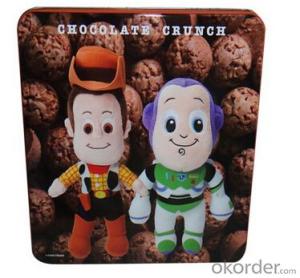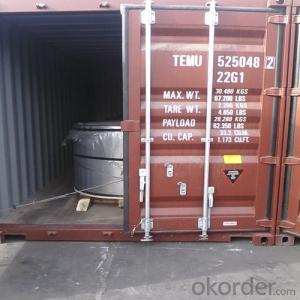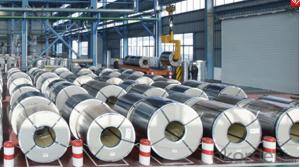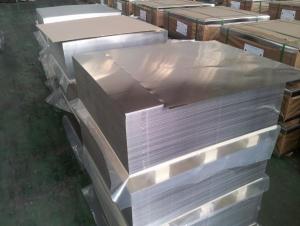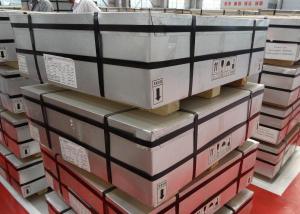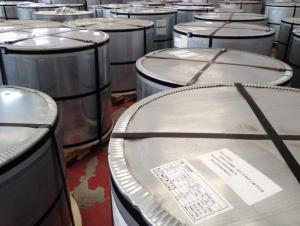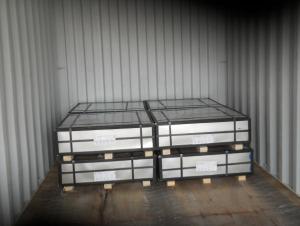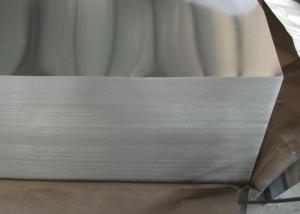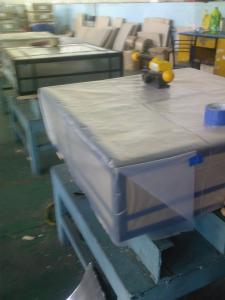Tinplate for Asia Market with High Tin Coating
- Loading Port:
- Shanghai
- Payment Terms:
- TT OR LC
- Min Order Qty:
- 25 m.t.
- Supply Capability:
- 1000 m.t./month
OKorder Service Pledge
OKorder Financial Service
You Might Also Like
1.Structure Description
Electrolytic Tinplate Sheets is one of the metal packing materials, which is widely used for making painting cans ,chemical package cans , electrical cable ,battery and metal printing etc.
2. Main Features
Steady and high quality
Fast shipment
Good experience for export work
For the surface, Plate uniform in thickness,uniform and smooth tin coating, without flaws,rusts,scratch,wave,nick of tin coating etc.
Price competitive
3.Images
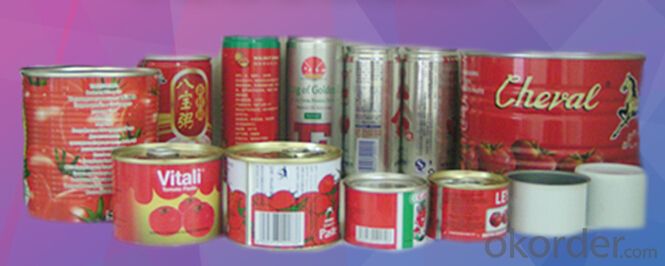
4. Specification
Standard : GB2520-2000 ,JIS G3303
Steel type : SPCC,MR
Coating : 2.8/2.8
Surface: Bright, Stone ,
Thickness:0.18
Width :600MM~1000MM
Temper : T1~T5,DR8
Package: tinplate wrapped completely with an inner cover of plastic or waterproof papers with vorners protected with metal angels.
5.FAQ
A. What is the package of tinplate? (Referred as below)
For sheets, thin plastic film + rust-proof paper + metallic cover + metallic angles+ steel band strips + fumigated wooden pallet.
For coil, thin plastic film + rust proof paper + metallic cover + steel band strips + fumigated wooden pallet
B. The surface of tinplate could you supply?
Stone finish, Bright finish, Matte finish, Silver finish
C. What quantity is the minimum order of tinplate?
Usually, the minimum quantity is 25MT. For special case, consult with us.
D. Can it make to be BA or CA for annealing?
Yes, both can do with.
- Q: How is tinplate coated with protective lacquer?
- Tinplate is coated with a protective lacquer through a process called electrostatic spraying. The tinplate is first cleaned and degreased to ensure proper adhesion of the lacquer. Then, the lacquer is applied to the tinplate using an electrostatic spray gun, which charges the lacquer particles and attracts them to the metal surface. This creates a uniform and durable coating that provides protection against corrosion and enhances the tinplate's overall appearance.
- Q: How does tinplate contribute to the conductivity of electrical components?
- Tinplate contributes to the conductivity of electrical components by providing a thin layer of tin coating on the surface of the component. This tin coating enhances the conductivity of the underlying material, such as copper or steel, by reducing the contact resistance and preventing oxidation. Tin is a highly conductive metal and acts as a barrier against corrosion, ensuring the longevity and reliability of electrical components.
- Q: How does tinplate packaging contribute to product durability?
- Tinplate packaging contributes to product durability by providing a strong and protective barrier against external factors such as moisture, air, and light. This helps to prevent oxidation, spoilage, and degradation of the product inside, ensuring its quality and extending its shelf life. Tinplate packaging also offers resistance to physical damage, such as dents or punctures, which can further enhance the durability and integrity of the packaged product.
- Q: What are the advantages of tin packaging?
- Shapes: tinplate cans can be made into various shapes according to different needs, such as cans, cans, cans, circular elliptical horseshoe and trapezoid etc, can satisfy the different needs of product packaging, and the packaging container more change, promote sales.
- Q: Can tinplate be used for packaging beverages?
- Yes, tinplate can be used for packaging beverages. Tinplate is a type of steel coated with a layer of tin, which provides excellent protection against corrosion and acts as a barrier against light, oxygen, and moisture. This makes it an ideal material for packaging beverages, as it helps to maintain the quality, freshness, and shelf life of the product. Additionally, tinplate cans are lightweight, durable, and recyclable, making them a sustainable choice for beverage packaging.
- Q: How does tinplate contribute to the preservation of tobacco products?
- Tinplate contributes to the preservation of tobacco products by providing a durable and airtight packaging solution. The tin coating on the steel sheet prevents the tobacco from exposure to moisture, light, and oxygen, which can degrade its quality. Additionally, tinplate offers protection against physical damage, ensuring that the tobacco remains intact and fresh for an extended period of time.
- Q: What are the main challenges in recycling tinplate?
- The main challenges in recycling tinplate include the separation of tin from the steel base, the removal of any contaminants or coatings on the tinplate, and ensuring the proper sorting and collection of tinplate waste to prevent it from ending up in landfills. Additionally, the energy-intensive process of melting and refining tinplate poses environmental concerns and requires adequate infrastructure for recycling facilities.
- Q: How to open cans
- A tin can be opened, the handle is separated, and the canned fruit can be clamped by the head, and the rotating knob and the tin can be opened. Remember, when you turn the knob, you can only rotate clockwise and turn counterclockwise clockwise.
- Q: Can tinplate packaging be used for gift items?
- Yes, tinplate packaging can be used for gift items. Tinplate is a durable and visually appealing material that can be used to create unique and attractive packaging for various gift items. It offers excellent protection for the contents and can be customized with different designs and finishes to enhance the overall presentation of the gift.
- Q: How does tinplate perform in terms of corrosion resistance?
- Tinplate performs exceptionally well in terms of corrosion resistance due to the presence of a thin layer of tin on its surface. This tin coating acts as a barrier, protecting the underlying steel from corrosion, making tinplate highly resistant to rust and other forms of corrosion.
Send your message to us
Tinplate for Asia Market with High Tin Coating
- Loading Port:
- Shanghai
- Payment Terms:
- TT OR LC
- Min Order Qty:
- 25 m.t.
- Supply Capability:
- 1000 m.t./month
OKorder Service Pledge
OKorder Financial Service
Similar products
Hot products
Hot Searches
Related keywords
